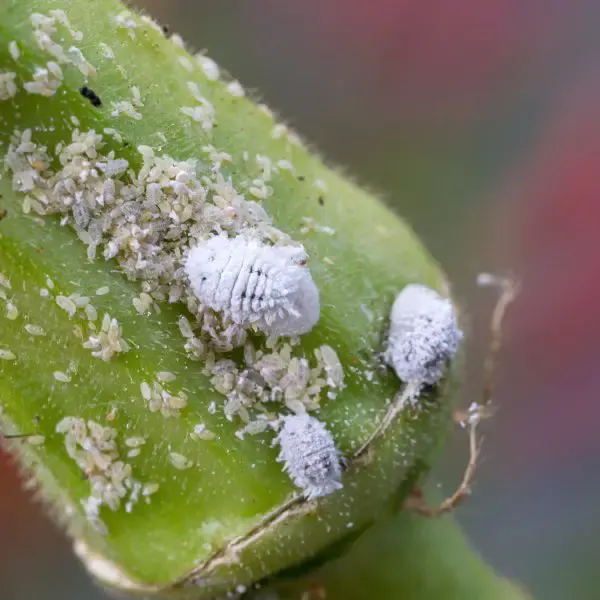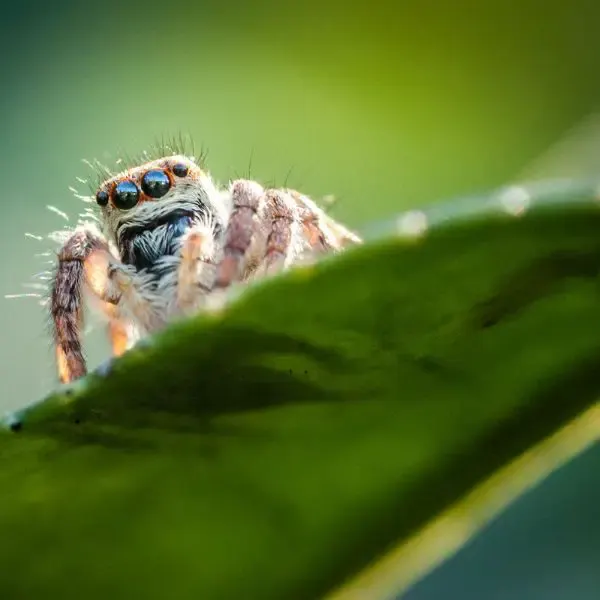Native to South Africa but raised and beloved around the world, Haworthia is quite the lovely succulent to have at home. While they are easy to care for, if you are just getting started with these succulents then there are still a few things to learn.
With that said, if you’re wondering your Hawworthia is turning brown, then you have come to the right place! Today we’re going to give you a quick crash course in Haworthia basics, as well as go over the most common reasons why your succulent plant is suddenly ‘breaking brown’.
After that, we’ll cover some common pests to keep an eye out for and answer some frequently asked questions before we go! Without further ado, let’s discuss the Haworthia succulent and what you need to know to keep the brown at bay!
Table of Contents
Haworthia – A quick overview of the basics
While Haworthia sounds like a single plant, it’s actually a genus that covers a large variety of slow-growing succulents but the good news is that their care is going to be fairly uniform. These plants need a cactus or succulent soil that is well-draining, so it will need to be about 30-50% perlite or pumice.
If you want to add a little sand for drainage, that’s okay too, but it needs to be the chunky kind. Fine sand won’t do – this can create a risk of your soil becoming compacted – so if you don’t want to hunt down the chunky sand just keep things simple and reliable with the perlite or pumice/
Sunlight is where things can get a little tricky and you’ll want to check your specific variety. That’s because some Haworthia have evolved to spend a lot of time in direct sunlight, while other types tend to grow in partial shade.
That said, in general most will require about 3 to 6 hours of direct or bright, indirect sunlight for best results (and you’ll be able to tell by the color – Haworthia that looks a little dull often just needs a little more soaking in the sun!).
Watering is probably the easiest factor once you’ve gotten used to taking care of these plants. That’s because Haworthia is extremely efficient at storing water, so you only need to water it when the soil dries out from your last watering.
This could mean watering only every two weeks or even longer, but testing the soil yourself will help you to find out the exact frequency that will be best. If the soil is still moist, don’t water your plant yet or you’ll put it at risk of root rot!
Now that we’ve got the basics, let’s take a look at what can cause your Haworthia to turn brown and what you can do about it!
The most common reasons why Haworthia turns brown
When your Haworthia is showing patches or large areas of brown, this definitely means that something is awry. Below you will find the most common reasons for this so that you’ll be better prepared to remediate the browning on your succulent plant. Let’s take a look!
1. Too much sunlight
While 3 to 6 hours of direct sunlight is generally ideal, anything more than that is not good for your plant. Succulents have evolved to grow in little nooks and cracks where they are hidden and often shaded during parts of the day.
If your Haworthia is right up against a south-facing window, it could be getting a little too much sunlight, so keep that in mind when placing your plant and if you suspect this is the problem, try moving it back a little so it will get more shade during the day.
2. Too much water
This is one of the most common reasons for browning – too much water. Haworthia plants are so low-maintenance when it comes to watering that if you are new to them, it’s not uncommon to feel like you might be neglecting your plant.
Reign in that worry – stick to watering ONLY when the soil has completely dried. Those thick leaves that you see are chock full of water from the last time you provided it, so your plant is perfectly fine until that soil dries!
3. Wrong humidity levels
Haworthias need a little humidity – but not a whole lot – and that can take some getting used to. If they don’t have enough, you’ll notice that your plant is losing leaves and you’ll definitely see browning. You can get around this with a mister or even put a humidifier in the room if you have a lot of plants.
A pebble tray is another option that looks nice and can help you to get a little humidity without adding to your electric bill like a humidifier would – it’s really your call!
Too much humidity, on the other hand, will actually cause fungal growth and you may even have rotting patches in the plant, so if you see that then you’ll want to move it somewhere with less humidity or consider putting a fan in there to help circulate the air a bit.
A dehumidifier in that room can also help you to have more granular control of the humidity if you are hosting a large number of plants in there.
4. Temperature fluctuations
Haworthia likes to stay warm, with 70 to 95 degrees being ideal in the summer, while winter temperatures should never go below 50 degrees.
When hosting your plants indoors, a south-facing window can get really hot, and if the plants are outdoors and you are in a place like Arizona or Texas, going over 95 degrees is all but guaranteed and that can hurt your plants.
So, place the plant with this in mind and if it’s indoors, watch out for AC vents as well. If you place the plant under a vent where it’s getting a direct current of refrigerated air, then the temperature fluctuations will stress your Haworthia and you’ll have an unhealthy plant.
5. Root binding
The final most common cause of browning is root binding and it occurs when you’ve housed your plant in a pot that’s a little too small.
By moving your plant to a larger pot, it should have enough soil to properly support the roots, and you’ll quickly notice that brown color being replaced by a proper, healthy green.
Pests to keep an eye out for (and how to get rid of them!)
Pests can be a real pain, but thankfully with Haworthia there is only a small range that you are likely to encounter and need to deal with. These pests are the most common:
Aphids

Aphids look like small, moving green spots on your Haworthia and magnified, you’ll see that they have large hindquarters and long legs. A little 70% rubbing alcohol can be sprayed to kill them and then you can spray again with water, although if you’re patient just the water will work as well!
Mealybugs

If you see a cobwebby, white fuzz that’s only on corners of your Haworthia then congratulations – you’ve got mealybugs! A quick rubdown with 70% rubbing alcohol on a cotton swab should clear them right up!
Scale
Scale looks like tiny black spots on your plant and you’ll notice that a quick scratch with your fingernail pops them right off. Using the same principle, a soft-bristled toothbrush can rub them right off or if you don’t have a lot of time, you can dip a cotton swab in 70% rubbing alcohol or even soapy water and they should come off quickly.
Spider mites

If you see a cobwebby, white fuzz that’s in random spots on your plant and a close look shows you tiny, red forms moving around, then you are dealing with a spider mite infestation. These pests, unfortunately, are hard to get rid off and you may need to remove heavily-infested areas and treat the rest with a 50/50 mix of isopropyl alcohol and water in a sprayer. Spray this once a week until they are gone, taking care not to get it on the soil, and angle your plant to try to get the undersides of the leaves (or use a swab if you’re worried). This should take care of the issue!
FAQS
Before we officially ‘check out’ for the day, we’ve compiled a few frequently asked questions that we think will come in handy in caring for your Haworthia plant. We’ll get those answered and then wrap things up good and proper for the day!
What does a healthy Zebra Haworthia look like?
A healthy Zebra Haworthia will be a nice, dark green and you’ll see bright, white clusters of tubercules that are crowded together to give that ‘Zebra’ effect that everybody loves. If your plant looks like what we’ve just described, it should be happy and healthy!
What does an overwatered Haworthia look like?
Haworthias store as much water as they can, so an overwatered Haworthia will feel squishy and bloated on the upper leaves, while the lower leaves will be brown. You’ll often see translucent leaves, as well, because the water is breaking through the cell walls and affecting the internal structure of the leaves.
What are the two most common reasons for Haworthia browning?
The two most common reasons for Haworthias browning are overwatering and too much sunlight. With overwatering, look for brown at the base, translucent leaves, and bloated upper leaves that feel squishy, rather than firm. Repot and start watering only when the soil is completely dry and this should help.
For too much sunlight, the brown can be anywhere on the plant – think of it like sunburn for plants and you’ve got the right idea. In this case, move the plant and make sure the new spot doesn’t get over 80 degrees for best results and your plant should recover.
In Conclusion
Today we’ve answered the question ‘Why is my Haworthia turning brown?’ and as you can see, it’s usually going to be overwatering or too much sunlight, but there are certainly other possibilities.
This can also occur if the plant is too dry, if there are too many temperature fluctuations, or if it is root bound. Once you’ve identified the problem, it should be easier to remediate, and keep the pest tips that we’ve shared today in mind while you’re dealing with that brown – they may come in handy later!
We’d like to thank you so much for reading and we sure hope to see you again soon!
More plant troubleshooting guides
